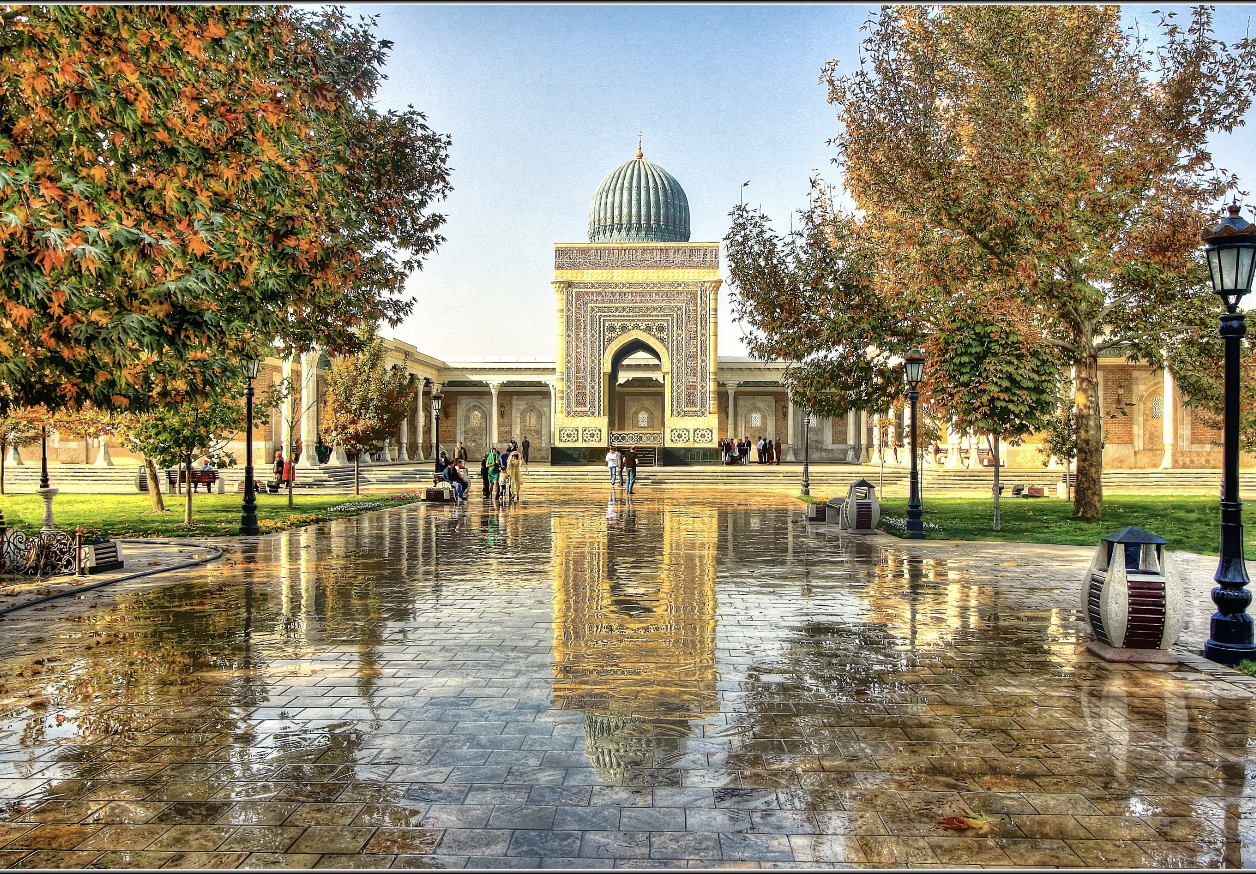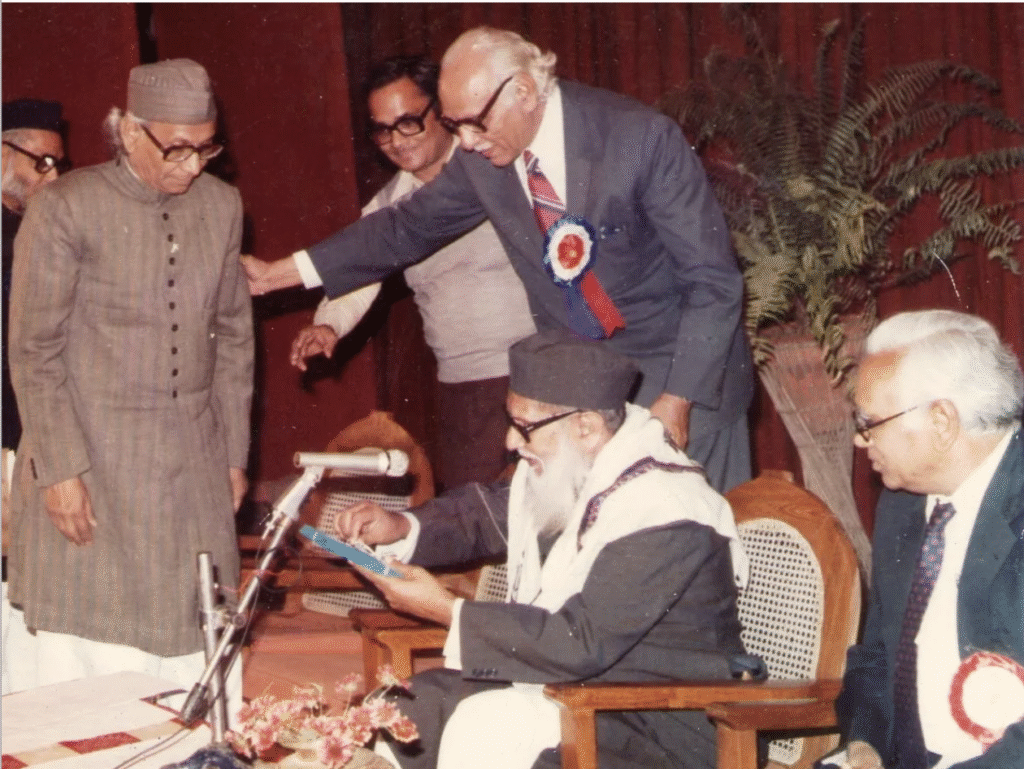A few days ago, I had the privilege of traveling from Gloucester to Oxford with Moulana Usman bin Firoz for a deeply engaging meeting focused on the enduring legacy of Imām Abū ‘Abdullāh Muḥammad ibn Ismā‘īl al-Bukhārī (d. 256 AH/870 AD). Our discussion with Dr. Ahmad Snobar, a professor of Ḥadīth Studies at Istanbul University, took place in the warm and welcoming environment of Dr. Akram Nadwī’s home. What began as an anticipated straightforward exchange flourished into a comprehensive exploration of Imām Bukhārī’s scholarly contributions, compelling us to consider his impact from a wider academic perspective.
Dr. Snobar is renowned not only for his expertise in ḥadīth works but also for his critical literary works, most notably ‘Min al-Nabī Ṣallallāhu ‘Alayhi Waṣallam Ilā al-Bukhārī.’ In this work, he offers a comprehensive examination of the transmission and critical methodology of Ḥadīth from the era of the Prophet Muḥammad ﷺ to Imām al-Bukhārī. Through meticulous analysis and reliance on original sources, the book sheds light on the rigorous processes adopted by the Ṣaḥāba and subsequent generations in collecting, verifying, and transmitting Ḥadīth. Dr. Snobar challenges prevailing narratives about the onset of Ḥadīth fabrications and critiques the emphasis on the early writing of Ḥadīth, advocating for a deeper appreciation of the oral tradition and the exceptional memory capabilities of early Muslims. This work stands as a significant contribution to Islamic studies, offering fresh insights into the intellectual rigor and historical dynamics that underpin the compilation and authentication of Ḥadīth, making it an essential resource for scholars and students in the field.
Imām Bukhārī is most celebrated for his rigorous compilation of “Ṣaḥīḥ al-Bukhārī,” revered within Islamic studies. Yet, the significance of his methodology and its implications for historical scholarship often remain overshadowed by his religious achievements. Our conversation, enriched by the expertise of Dr. Bekir Kuzudisli, a well-known research scholar of Ḥadīth at İstanbul University, highlighted the innovative nature of Bukhārī’s approach to scholarship. This prompted a re-evaluation of Imām Bukhārī not merely as a religious figure but as an innovator in historical research. His exacting approach toward verifying sources and establishing stringent criteria for the acceptance of Ḥadīth has set a benchmark for authenticity in both religious and historical studies. Revisiting Imām Bukhārī’s legacy through the lens of historical methodology reveals his crucial role in formulating a disciplined and ethically grounded approach to research. Acknowledging Bukhārī as a historian offers deep insights into his methods and the ethical considerations that formed his scholarship. As a social sciences student, the point made by Dr. Snobar regarding Bukhārī’s approach struck me as particularly fascinating.
Furthermore, this discussion highlighted the importance of understanding the specific goals and objectives of each subject, including the methodology and intentions of its authors. This is essential across various fields, such as commentaries on Fiqh, Tafsīr, and others. Without studying these works in their proper context, it becomes difficult to grasp their objectives. This is a challenge often faced by students, as they often find the texts unappealing due to a perceived disconnect, highlighting the need to integrate this contextual awareness into our study methodologies.
Dr. Snobar introduced a pivotal aspect of our discussion by drawing the distinction between Sunni and Shia traditions of Ḥadīth studies, emphasizing that this difference is not merely academic but fundamental to the understanding and appreciation of the Sunni Ḥadīth literature. His insight further enriched our conversation, providing a broader context for the appreciation of Imām Bukhārī’s contributions. Dr. Snobar highlighted that even in the hypothetical absence of Bukhārī’s contributions in his Ṣaḥīḥ, all but one narration can still be located through the various sources in Ḥadīth literature. In essence, Bukhārī is merely one narrator among many narrators of Ḥadīth but stands out significantly in the realm of historical and critical scholarship because of his meticulous approach and rigorous criteria for compiling the Ṣaḥīḥ. This unique methodology is reflective of his unparalleled stature in historical scholarship, setting him apart as a figure without compare in the meticulous practice of compiling authentic Ḥadīth. Viewing Imām Bukhārī’s contributions through this prism not only affirms his stature beyond religious scholarship but also as a vanguard in the field of historiography. His work does more than preserve Islamic teachings; it establishes a methodological framework that enhances our understanding of historical practices. As we delve into the complexities of documenting and interpreting history, Bukhārī’s methodological principles advocate for a more thorough, nuanced, and respectful engagement with sources.
The meeting, concluding with Dr. Snobar’s gracious sharing of his books, signified the ongoing exchange of knowledge and the desire for further scholarly engagement. Towards the end of our meeting, we were privileged to enjoy the company of Moulana Huzaifah Ismail, who is currently undertaking doctoral studies at SOAS, University of London. We look forward to welcoming Dr. Snobar back to the UK, to highlight the significant contributions of scholars here and to foster continued dialogue and learning within the realm of Islamic historiography. This recent gathering not only enriched our understanding but also stressed the value of interdisciplinary dialogue in uncovering the complex legacy of scholars like Imām Bukhārī, whose work continues to inspire and challenge scholars across the globe.



